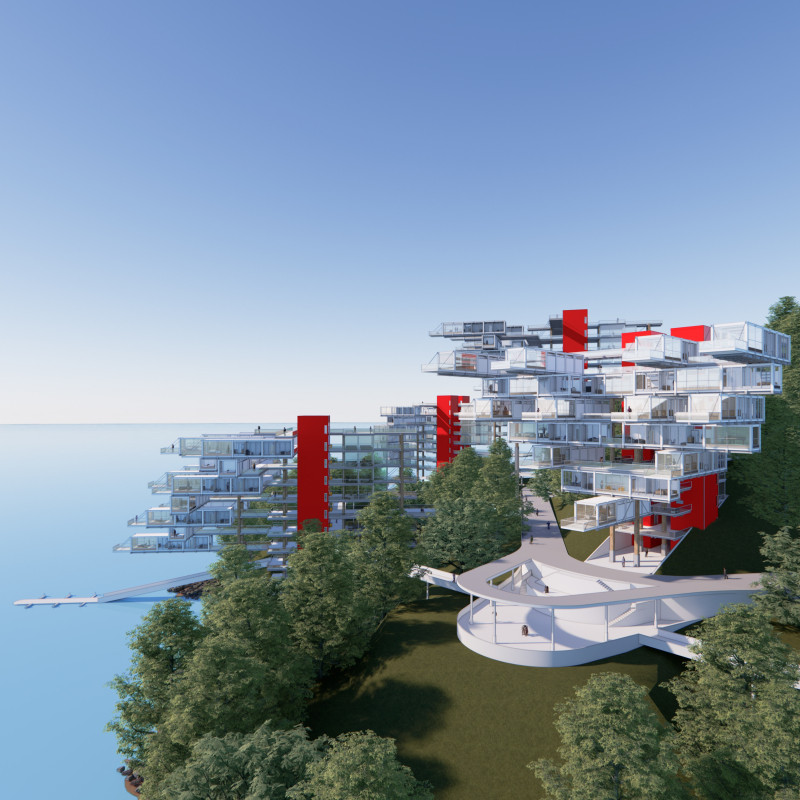5 key facts about this project
Camellia Hill is located on Dongbaek Camellia Island in Busan, South Korea, harmonizing with its unique seaside and mountainous landscape. The modular housing design responds to the challenges of urban density while prioritizing sustainability. The concept emphasizes creating eco-friendly homes that offer a peaceful environment for residents and promote a connection with nature in a busy urban setting.
Architectural Strategy
The design uses a modular approach, emphasizing vertical development to make use of the limited land available on the island. This method allows for effective spatial organization and improves access to natural light and outdoor views, which are important for residents' well-being. The layout fosters community interaction, encouraging social connections between neighbors while still maintaining personal privacy within the home.
Cultural Integration
A key feature of Camellia Hill is its incorporation of Gong Po, a traditional Korean architectural system that provides both structural support and visual interest. This element connects the design to the local heritage and culture. The careful arrangement of spaces balances areas of fullness and emptiness, creating inviting communal gardens and inner courtyards. These spaces encourage residents to engage with their environment and one another.
Sustainability Features
The commitment to sustainability is apparent in various aspects of the design. Several energy-efficient systems are included, such as translucent thermal insulation and thermal storage units. These features work together to reduce energy consumption. The project also implements air collectors and water harvesting systems, along with photovoltaic panels to harness renewable energy. Ventilation is improved through strategically placed flaps and decentralized equipment, ensuring that fresh air circulates throughout the living spaces.
The careful arrangement of modular units not only meets the practical housing needs of residents but also creates inviting areas that encourage interaction with nature and foster a strong sense of community, culminating in a vibrant living environment shaped by the island's scenic beauty.






















































